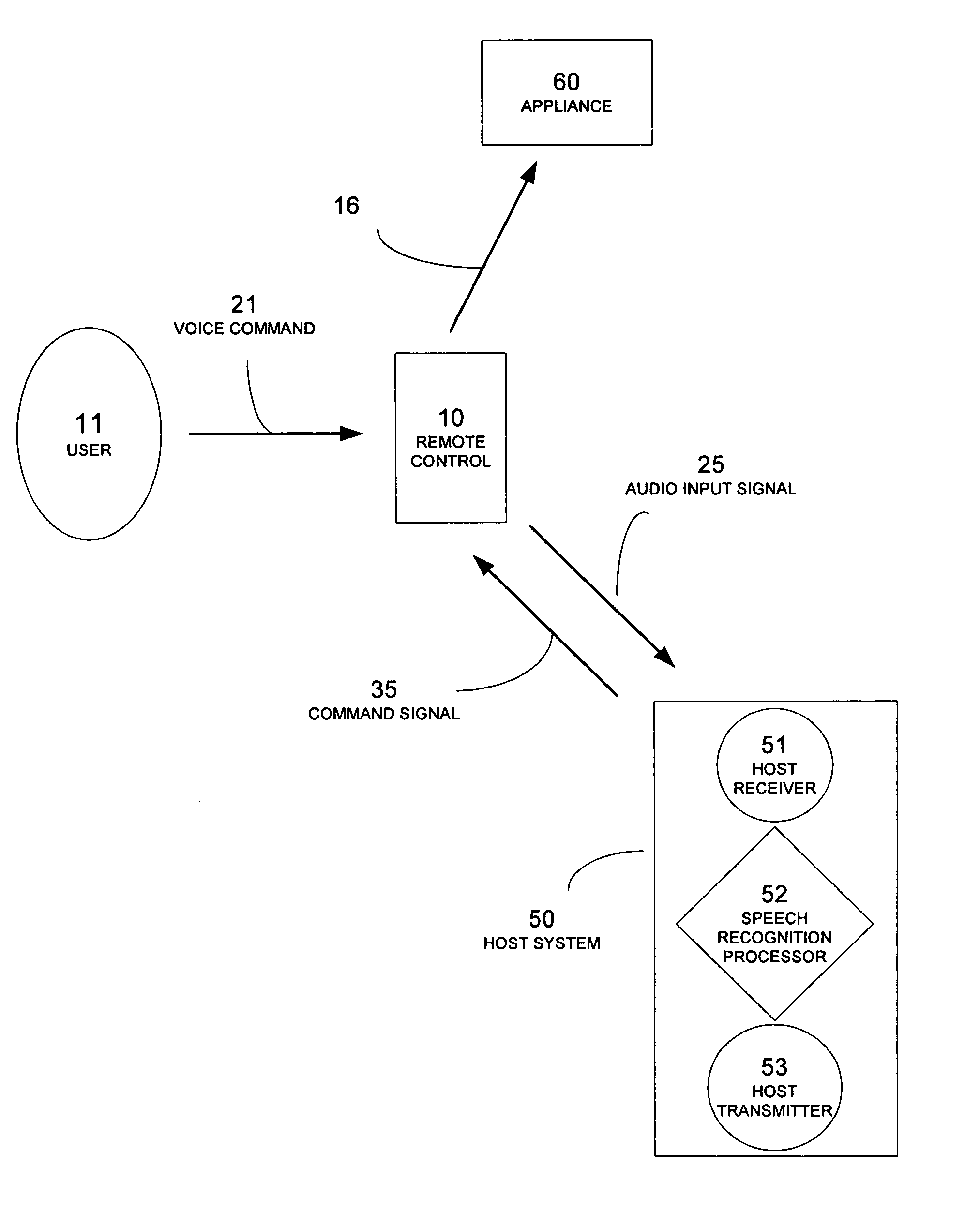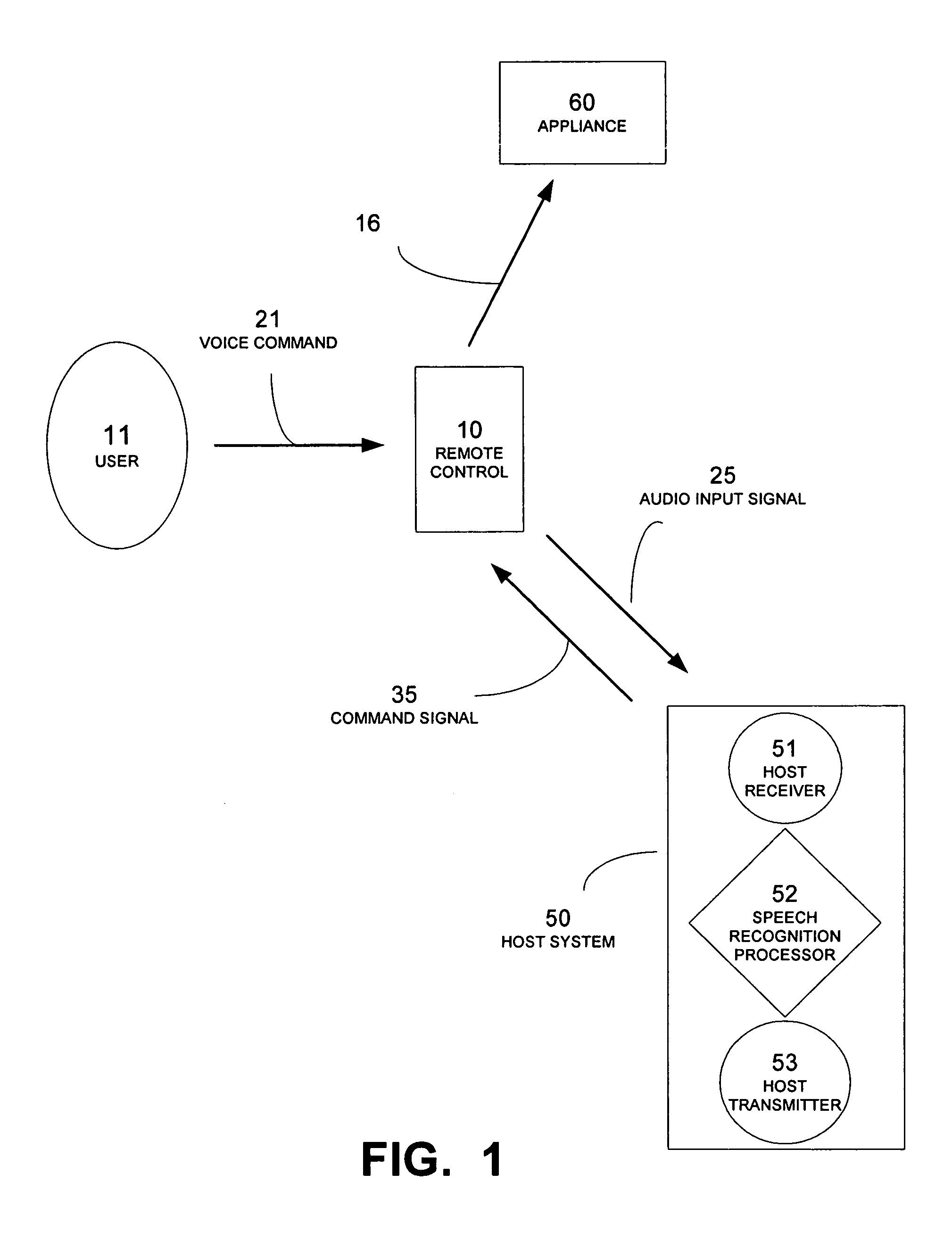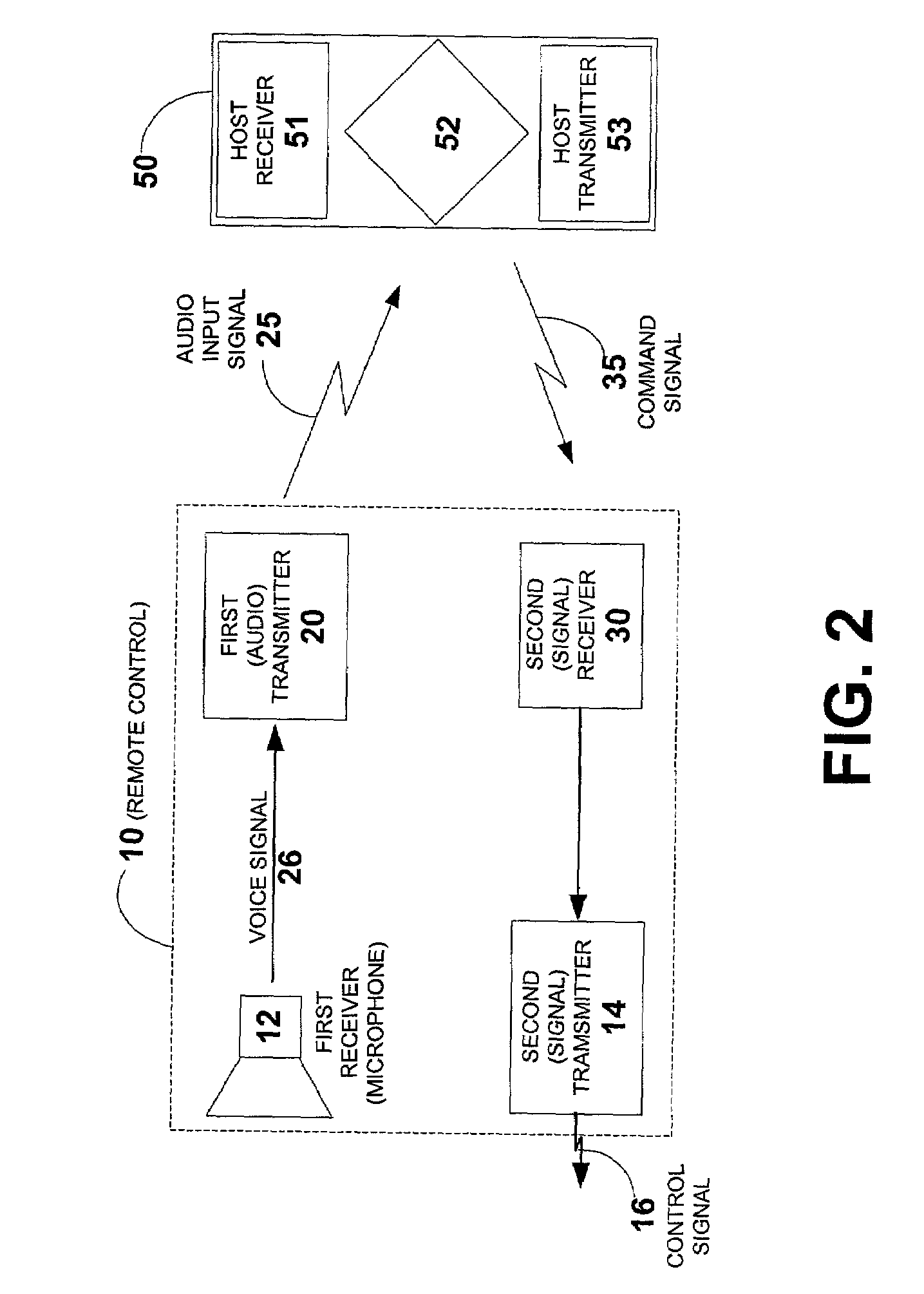General remote using spoken commands
a remote control and general technology, applied in the field of general remote control using spoken commands, can solve the problems of inability to integrate small devices, large hardware and software components, and inability to solve the initial accuracy rate of speech recognition, etc., and achieve the effect of not having to duplicate the expensive resources of each control, high customization, and easy updating or changing
- Summary
- Abstract
- Description
- Claims
- Application Information
AI Technical Summary
Benefits of technology
Problems solved by technology
Method used
Image
Examples
Embodiment Construction
[0023]The invention relates to use of the nontrivial speech-recognition resources in a way that is affordable such that they can be used to control various electronic and electrical devices such as those found in homes, automobiles, boats, etc. Embodiments of the present invention employ a nontrivial speech-recognition resource centralized in a machine separate from the remote control units so that the expensive speech-recognition resources need not be duplicated for each remote control and / or appliance. Using the speech-recognition resources in the host system, the remote controls behave as a general remote translator (GRT), which can translate relatively sophisticated voice command into a proper control signal for any specific appliance. These remote controls may be generally referred to as “voice-translating remote controls.”
[0024]FIG. 1 illustrates a schematic diagram of one embodiment of the present invention. A user 11 utters a speech command 21, which is not limited to the pr...
PUM
 Login to View More
Login to View More Abstract
Description
Claims
Application Information
 Login to View More
Login to View More - R&D
- Intellectual Property
- Life Sciences
- Materials
- Tech Scout
- Unparalleled Data Quality
- Higher Quality Content
- 60% Fewer Hallucinations
Browse by: Latest US Patents, China's latest patents, Technical Efficacy Thesaurus, Application Domain, Technology Topic, Popular Technical Reports.
© 2025 PatSnap. All rights reserved.Legal|Privacy policy|Modern Slavery Act Transparency Statement|Sitemap|About US| Contact US: help@patsnap.com



